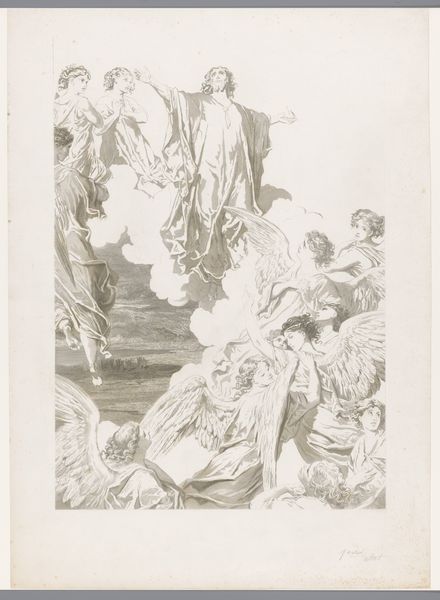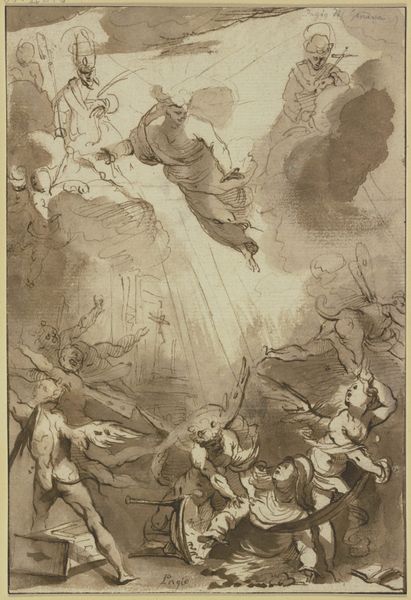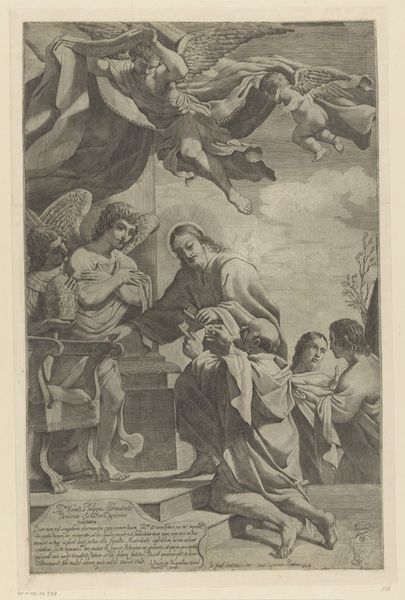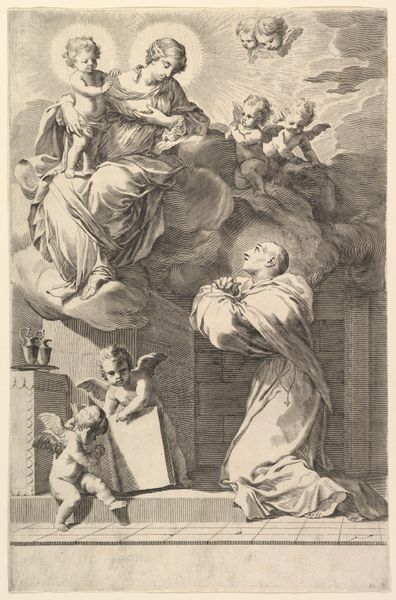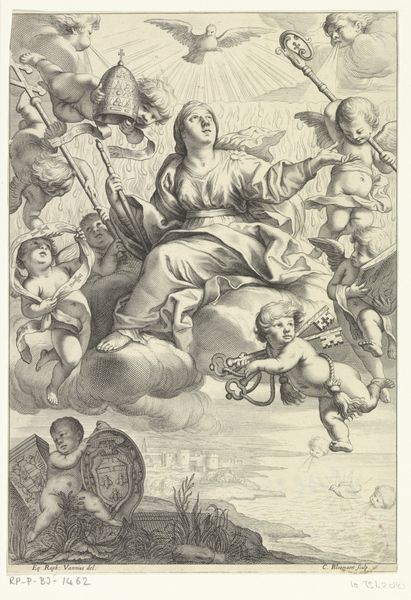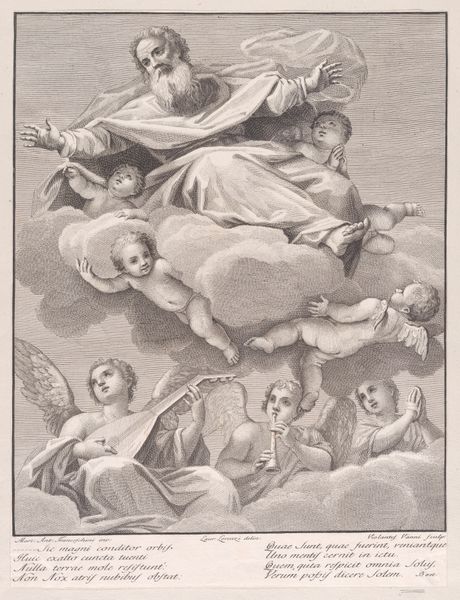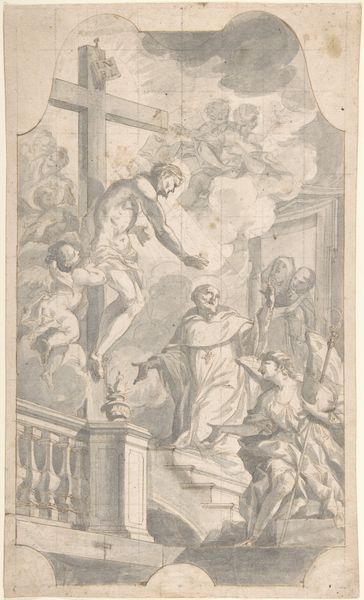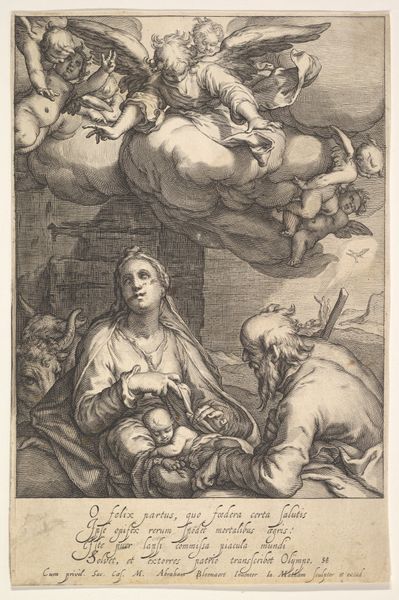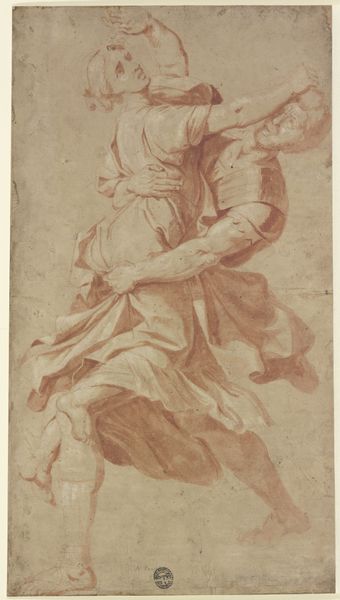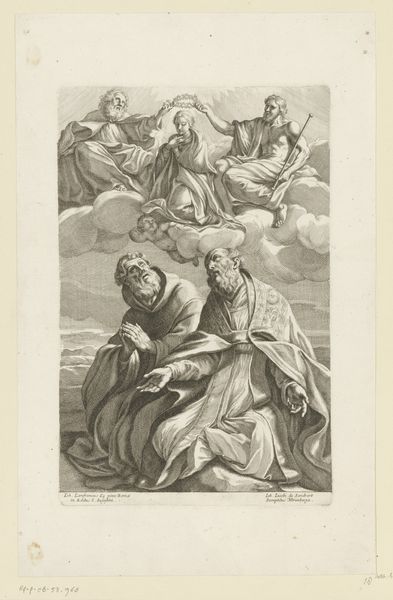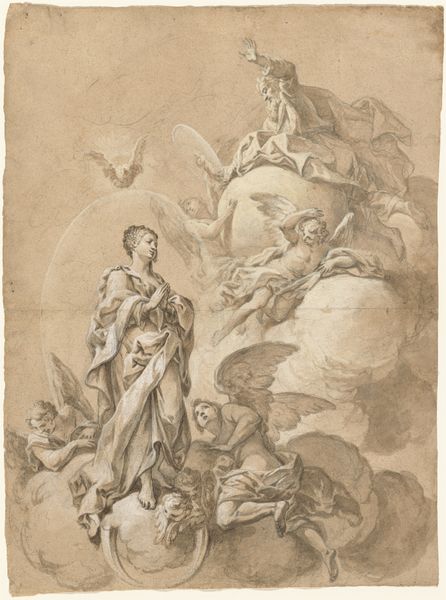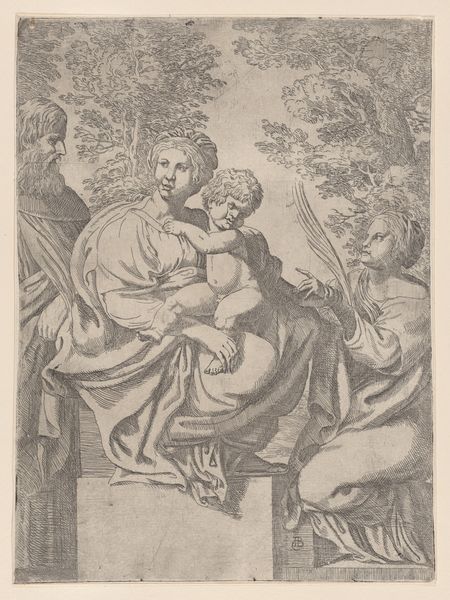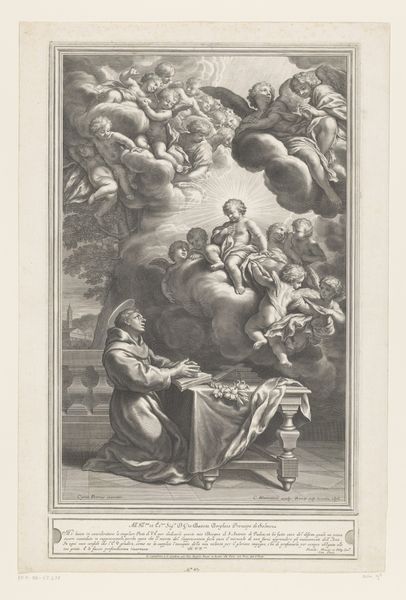
A male saint kneeling before the Christ child 1670 - 1731
0:00
0:00
drawing, print, engraving
#
drawing
#
allegory
#
baroque
# print
#
figuration
#
engraving
Dimensions: Sheet (Trimmed): 13 5/16 × 9 1/16 in. (33.8 × 23 cm)
Copyright: Public Domain
Editor: This engraving, "A Male Saint Kneeling Before the Christ Child," is an anonymous piece from around 1670 to 1731. There's a saint kneeling with a book, while a swarm of cherubic figures and clouds swirl above. What I find striking is the almost dreamlike quality—the saint seems completely immersed in a vision. How do you interpret this work? Curator: The symbolic density of this piece speaks volumes. The kneeling saint immediately conjures humility, piety. Notice how the Christ child isn't simply present, but actively engaging with the globe. Consider the globe: What could that placement on that image mean to someone in the 17th century? Editor: I'd imagine the globe represents earthly power and perhaps divine authority over it? Curator: Precisely. The artist, although unknown, taps into the Baroque era’s love of allegory. It’s more than just a religious scene. The surrounding putti, some playing musical instruments, point to celestial harmony. It implies the saint's devotion opens a portal to divine grace. Don’t you find the saint seems almost crushed by this vision of celestial activity? Editor: Absolutely, there’s an overwhelming sense of awe. Is it possible that the artist might be questioning that traditional view by presenting the experience as somewhat crushing? Curator: That's a very astute observation. This period was ripe with new philosophical perspectives on the Church's role and the role of faith. While the explicit meaning celebrates piety, these emotional ambiguities are definitely simmering below the surface. Editor: So, it’s a more complex visual statement than I initially thought, with layers of historical context and possible alternative readings woven into the symbolism. Curator: Exactly. The power of visual symbols lies in their enduring capacity to evoke a multitude of emotions and interpretations, reflecting both cultural norms and subtle critiques.
Comments
No comments
Be the first to comment and join the conversation on the ultimate creative platform.
